The timespan to obtaining a Private Pilot License & fastest tracks.
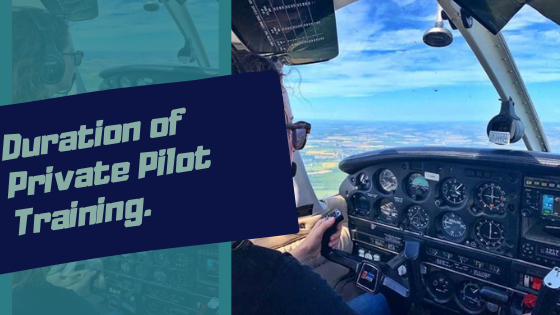
Before committing to getting a private pilot license, understand how many months you must dedicate to getting it.
Most of my readers are PART 61 student pilots who enjoy flight training at their own pace. Regardless, I’ll also discuss the duration of PARt 141 pilots here. I’ll also cover how you can complete each step in the quickest possible time.
However, there is no short answer to your original question: “How long does it take to get a private pilot license?”
Getting a private pilot license (PPL) can take up to three months. PART 61 pilots train in their spare time and stretch the duration as long as they wish. This is, of course, not recommended. On the contrary, PART 141 pilots follow a structured path and have limitations to complete training within a limited time.
Though there are ways to finish training quickly, there are limitations on how fast you can get the license. Now, let’s get into the long answer.
The average time for getting a Private Pilot License (PPL) varies for each individual.
Several variables alter the duration of getting a private pilot license. We can begin by understanding the variables and each step that requires time to get an FAA private pilot license.
The significant problem is individual progress in overcoming each step. Whether you’re a PART 61 pilot or a PART 141 pilot, follow a strict routine until you get your private pilot license.
The best thing you could do is listen to your CFI’s suggestions and understand which step to take before what.
Flying an airplane is not like driving a car. The process of getting your hands on the wheel of an aircraft involves the following steps:
- Begin by getting your student pilot license and enrolling in a ground school;
- Pass your private pilot knowledge test;
- Build adequate flying hours, including instructions according to ACS;
- Schedule a private pilot checkride and take the practical exam.
Each step mentioned above requires time, and if you’re committed, you can do all these within three months. For many, new challenges seem overwhelming.
Hence, your dedication and effort matter in how quickly you get your first pilot license. Without effort, you’ll spend more time in the process. It’s also possible to get a private pilot license within two months, but that may not suit your busy life.
Getting your student pilot license and ground school takes four weeks.
To apply for a student pilot license, you need a third-class medical certificate as per requirement.
Getting a medical certificate is straightforward and shouldn’t take more than a few hours. All you have to do is visit an FAA-designated doctor, undergo some tests, and get your medical certificate.
Once you have your medical certificate, your flight school can apply for a student pilot license so that you can begin flight training.
Getting your student pilot license can take somewhere between 2 to 3 weeks.
During these three weeks, some students wait, some begin flight training, and many complete ground school.
I always suggest student pilots begin ground schooling during this time. Reviewing the syllabus and aeronautical knowledge before getting into flight genuinely helps students grasp flight lessons quickly.
PART 61 students can enrol in an online ground school, and PART 141 students may begin classes in their flight school.
Completing the ground school while waiting for your student pilot license helps shorten the duration of obtaining a private pilot license.
As a PART 61 pilot, dedicate only a few hours daily to go through the private pilot online ground school lessons. Instead of being idle, you complete ground school and stay ahead.
PART 61 students can continue the training at their own will, so go through the ground school and get your private pilot knowledge test endorsement.
Some PART 141 students also continue flight training during this waiting period. Typically, PART 141 pilots are on a structured path and prefer ground classes and flight training simultaneously.
Dedication is essential for ground school studies because this is where you build the foundation of aeronautical knowledge and flying for the future.
If your friend took one month to finish ground school, it doesn’t imply you have to do the same. Don’t skip anything; take your time here if you need to. Not everyone can grasp new subjects in a short time.
Passing your private pilot knowledge test takes two weeks.
By now, you have spent a month taking ground school and waiting for your student pilot license. From here, things begin to get serious.
It’s time to schedule and pass your private pilot knowledge test (written exam).
After PART 61 students complete ground school and pass the quizzes online, the CFI endorses the student pilot for the FAA private pilot knowledge test.
We’re on track to getting a private pilot license in three months.
So, register for a private pilot knowledge test online with your endorsement. Keep two weeks from registration to the day of the exam. You want two weeks to prepare for the exam.
You have taken the ground school. Now, it’s time to practice mock tests. You can do that online using software or available test prep books.
Two weeks is sufficient for preparation.
By the time you pass the knowledge test, you will spend 1.5 months/6 weeks in the course.
Note: This article is meant for PART 61 students who intend to get a private pilot license acceleratedly. There is no time limit for training; you can take it as slowly or as fast as you want.
Building adequate flying hours, including instructions, solo, and cross-country, takes six weeks to two months.
You passed your knowledge test, which boosts your confidence, and you’re up in the air, taking actual flight instructions.
This is the best time for your training. Training lessons would seem more straightforward here because you spent the last six weeks studying on the ground.
The FAA requires PART 61 student pilots to have at least 40 hours of flight time, of which 20 hours must be flight instructions from a CFI and 10 hours solo.
Nevertheless, after 40 hours of flight training, a typical student pilot is not ready to apply for a private pilot certificate.
The national average for a student pilot to get their private pilot license (PPL) is between 70 hours
Let’s breakdown the flight training into two phases for clarification:
- Flight training timespan to get your first solo flight;
- Building hours and meeting FAA requirements.
Flight training timespan to get your first solo flight.
Since you begin your flight training, your initial objective is to practice for a solo flight.
Students may get their first solo flight after 10 hours of flight instruction. Some are late bloomers and require 30 hours of training. This is where appropriate ground schooling and individual progress play a more prominent role.
Being a late bloomer impacts the duration of the entire process because the FAA has specific flight requirements for solo pilots.
Building flight hours and meeting the FAA requirements as a solo pilot.
FAA mentions in 14 CFR PART 61 that a student pilot must accumulate 10 hours of solo flight before applying for the private pilot checkride.
Therefore, taking too long to get your first solo is correlated to building solo hours for a private pilot license.
Nevertheless, don’t be embarrassed if you take 30 hours to solo because it’s common except for a few exceptional natural aviators.
After you solo, there are the following requirements:
- Solo cross-country flight for three hours;
- Three hours of night flight;
- Introductory instrument flight for three hours.
Meeting all these requirements within forty hours of flight training is challenging for most student pilots.
Mastering flight operations in appropriate areas commonly takes 55 hours of flight training. Many students exceed 70 hours to be ready for the private pilot checkride.
Be prepared to spend at least 55 hours in the sky to practice flight maneuvers regardless of being a PART 61 or PART 141 student pilot.
If you’re smart, you can fly 55 hours in a month. Two hours daily for thirty days will take you there.
However, there is a nuance. You might fail to learn if you rush to build flight hours to meet the FAA requirements. So, have patience, take as much time as you need to learn the lessons, and be competent.
Similarly, PART 61 pilots sometimes take it too slow.
Most PART 61 student pilots prefer flying during the weekends and taking long breaks between one flight to another lead to repeat lessons.
As a result, more flight lessons become imminent, and more time is spent in the process.
Hence, at this stage, I recommend that student pilots who wish to complete flight training within the next two months devote more time to flight training each week.
The best thing to do is fly three times a week and take a one or two-day break between each flight. If possible, fly 5 hours a day.
By flying 15 hours a week, you can accumulate 60 hours a month. By then, you’ll be close to achieving your first pilot license.
Nevertheless, multiple factors hinder accumulating hours quickly. Everything doesn’t always work as planned. We’ll discuss these inhibiting factors later in this article.
It’s been nearly three months since you began your journey to getting a private pilot license (PPL).
Considering everything worked as planned, you have passed the FAA knowledge test and accumulated hours adhering to the Federal Aviation Regulations (FAR) to apply for a PPL checkride.
Scheduling for a private pilot checkride and taking the practical exam.
There is no certainty on how soon you can schedule a checkride. It depends on the availability of a Designated Pilot Examiner (DPE).
Often, the DPE is available for the practical and oral exam on the following weekend upon request.
In rare cases, the DPE is unavailable, and it might take months to complete your checkride.
Prepare and study for your checkride well because failing your checkride is like compromising all the effort you have put in during the last three months.
On your big day, after you pass your checkride, the DPE will issue a temporary certificate that tells all about your achievement. You can use this certificate to operate an aircraft as a private pilot.
If you’ve come this far in this article, you know the fastest you can receive your private pilot license from scratch is in three months.
PART 141 pilots usually get their private pilot license in three months. On the contrary, PART 61 pilots have fewer obligations to complete training quickly.
Ideally, I urge aspiring pilots to spend four months on average to get a private pilot license regardless of being in PART 61 or PART 141 training.
Lastly, what factors alter the duration of getting a private pilot license?
Adverse weather conditions:
If you begin your private pilot training during the rainy season, you can expect many cancelled flights, as most of your training flights would be VFR.
If the weather in your air base vicinity is primarily gloomy, you’ll have more canceled flights, which will significantly impact training duration.
Plan to begin your flight training during the time of the year when the weather is expected to be great for months.
Or you can relocate and train where the weather is fair year-round.
Availability of money to fund flying lessons:
If you don’t allocate a wholesome budget to get your private pilot license, you may run out of cash to fund private pilot training.
Students often plan to get a private pilot license with 40 hours of training, but the reality is different. You’re about to train around 60-70 hours in the aircraft.
Paying that extra 20 to 30 hours beyond your allocated budget can be problematic and delay getting a pilot license.
Allocate extra money or at least 70 hours of aircraft rental to get your private pilot license regardless of what your flight school preaches.
Your flight school has many grounded aircraft.
It’s a common problem. Once you visit a flight school, you see too many aircraft lined up in the hangar, ready to take flight.
But the truth is many aircraft are grounded and used by the flight schools to flex their fleet.
Having fewer aircraft and more students can delay your training. It’s difficult for flight dispatchers to accommodate too many students on scheduled flights.
Remember to ask your flight school how many airworthy aircraft they have in their flight school. Also, learn about the number aircraft to students ratio.
Choose a flight school with a good track record and fewer students. The priority is to complete training and get your private pilot license fast.
Conclusion.
Some individuals deliberately delay their pilot training. But it’s straightforward to get a private pilot license.
At most, you can spend four months. Nevertheless, one can steadily progress with willpower, discipline and effort to obtain a private pilot license in the shortest possible time.
RESOURCES:
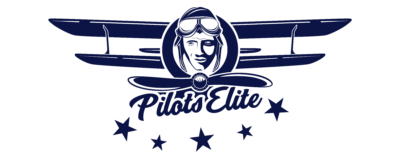
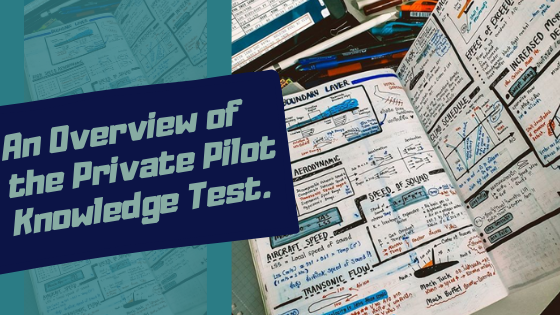
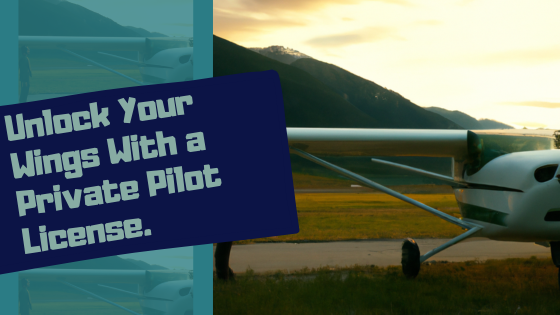
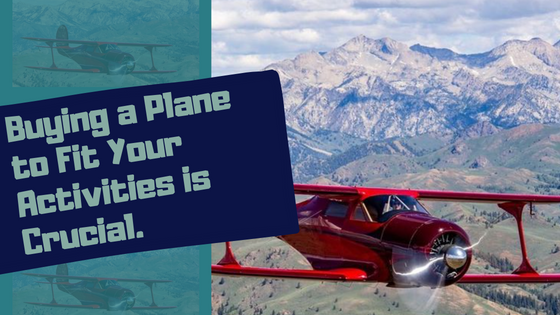
Thank you for explaining that it can take six weeks to two months to get your PPL. I’ve been curious about the timeline since my son mentioned wanting to become a pilot. I’ll have to share this with him and see if we can find a good schedule for him to get in his hours.